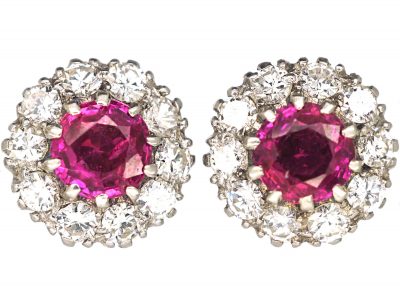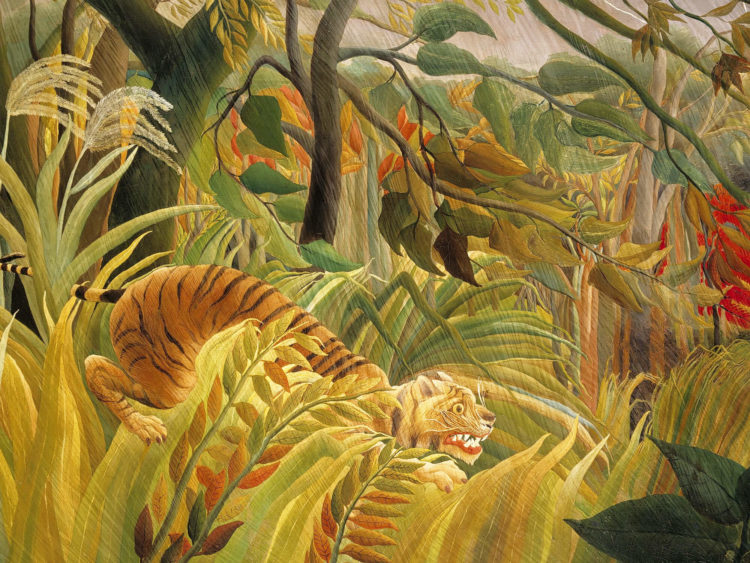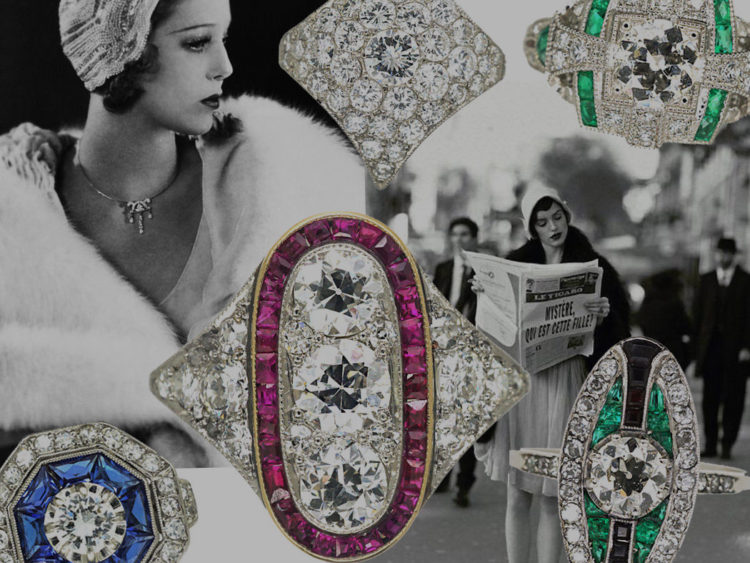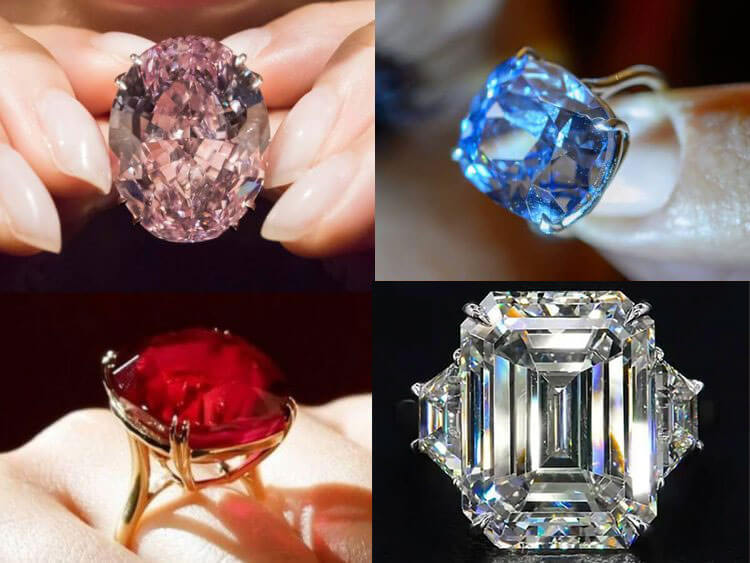-

Your Shopping Bag is empty
Flower Earrings and Rings
Florals are amongst the most enduring motifs in jewellery. For centuries the humble flower has inspired countless tokens of love, most notably in rings, earrings, pendants and brooches.

Hidden meanings
Flowers were a particularly common motif in Georgian rings. Gemstones adorned the petals of flowers and their first letters spelt out words such as ‘dearest’, ‘regard’ and ‘love’. Acrostic rings such as these were the ultimate gift between sweethearts in the Georgian and Victorian eras. At this time nothing was more romantic than sending secret messages. It was if they were their own love language.

DID YOU KNOW
Acrostic jewellery – sometimes known as the “language of gemstones” – spells a word using the first letter of every gemstone used. For example, a piece of jewellery embedded with a Ruby, Emerald, Garnet, Amethyst, Ruby and Diamond would spell ‘REGARD‘.

Pense à Moi
The pansy floral motif often conveyed a secret message in jewellery designs. As a pun on the French ‘pense à moi’ (think of me), many hearts have fluttered when receiving such romantic pieces.

Forget Me Nots
Florals often appeared in turquoise jewellery from the Georgian and Victorian periods. The turquoise represented the colour of the “forget me not” flower – making it a poignant symbol of remembrance of true and undying love.
-
 Victorian 18ct Gold, Turquoise & Rose Diamond heart Shaped Ring with Bow on top
Victorian 18ct Gold, Turquoise & Rose Diamond heart Shaped Ring with Bow on top -
 Regency 15ct Gold, Natural Split Pearl & Turquoise Circles Ring
Regency 15ct Gold, Natural Split Pearl & Turquoise Circles Ring -
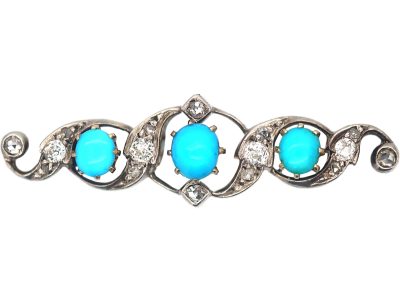 Victorian Turquoise & Diamond Brooch in Original Henry Tessier Case
Victorian Turquoise & Diamond Brooch in Original Henry Tessier Case -
 Victorian 18ct Gold, Three Stone Turquoise and Rose Diamond Ring
Victorian 18ct Gold, Three Stone Turquoise and Rose Diamond Ring -
 Regency 18ct Gold Heart Shaped Pendant set with Turquoise with Glazed Locket on the Reverse
Regency 18ct Gold Heart Shaped Pendant set with Turquoise with Glazed Locket on the Reverse -
 Victorian 18ct Gold, Five Stone Turquoise & Rose Diamond Forget me Not Ring
Victorian 18ct Gold, Five Stone Turquoise & Rose Diamond Forget me Not Ring -
 Victorian 15ct Gold, Turquoise Enamel Brooch with Rose Diamond Set Forget me Not Flower
Victorian 15ct Gold, Turquoise Enamel Brooch with Rose Diamond Set Forget me Not Flower -
 Victorian 15ct Gold & Turquoise Heart Shaped Pendant with Locket on the Reverse
Victorian 15ct Gold & Turquoise Heart Shaped Pendant with Locket on the Reverse -
 Edwardian 18ct Gold, Turquoise & Natural Split Pearl Heart Shaped Forget Me Not Pendant
Edwardian 18ct Gold, Turquoise & Natural Split Pearl Heart Shaped Forget Me Not Pendant -
 Regency 15ct Gold, Turquoise, Natural Split Pearl & Rose Diamond Ring
Regency 15ct Gold, Turquoise, Natural Split Pearl & Rose Diamond Ring -
 Regency 15ct Gold Flower Spray Brooch set with Turquoise, White Coral, Natural Split Pearl, Amethyst & an Emerald
Regency 15ct Gold Flower Spray Brooch set with Turquoise, White Coral, Natural Split Pearl, Amethyst & an Emerald
Daisies
Jewellery, like fashion, was a lot airier in the Edwardian era than the Victorian era. The discovery of platinum – far tougher than gold – enabled jewellers of the day to create very light and delicate pieces.
Kind Edward VII’s wife, Queen Alexandra, was a huge trendsetter and her fondness for flowers led to the popularity of ethereal, floral motifs in jewellery.

The cluster-style designs that emerged became known as daisies, because of their resemblance to the classic English wildflower with its circular white petals. Small stones would mimic petals and surround a larger central stone – often a diamond, coloured stone or pearl. Daisy clusters were hugely popular from the Edwardian era onwards, either as rings or earrings. They acted as a lovely, carefree relief from the heavier designs of late 19th century.
-
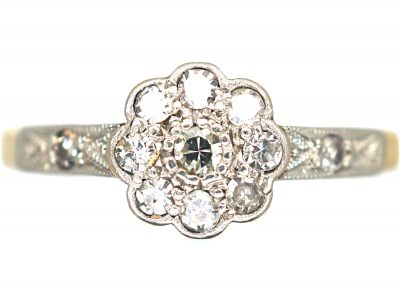 Edwardian 18ct Gold & Platinum Diamond Cluster Ring with Diamond Set Shoulders
Edwardian 18ct Gold & Platinum Diamond Cluster Ring with Diamond Set Shoulders -
 Edwardian 18ct Gold Large Rub Over Set Diamond Daisy Cluster Ring
Edwardian 18ct Gold Large Rub Over Set Diamond Daisy Cluster Ring -
 Early 20th Century 15ct Gold & Platinum, Rose Diamond Daisy Cluster Ring
Early 20th Century 15ct Gold & Platinum, Rose Diamond Daisy Cluster Ring -
 Edwardian 18ct Gold & Diamond Daisy Cluster Ring
Edwardian 18ct Gold & Diamond Daisy Cluster Ring -
 Edwardian 18ct Gold, Diamond Daisy Cluster Ring
Edwardian 18ct Gold, Diamond Daisy Cluster Ring -
 Edwardian 18ct White Gold, Three Stone Ruby & Diamond Triple Cluster Ring
Edwardian 18ct White Gold, Three Stone Ruby & Diamond Triple Cluster Ring -
 Edwardian 15ct Gold, Turquoise & Diamond Oval Cluster Ring with Turquoise Set Shoulders
Edwardian 15ct Gold, Turquoise & Diamond Oval Cluster Ring with Turquoise Set Shoulders -
 18ct Gold & Platinum, Diamond Daisy Cluster Ring
18ct Gold & Platinum, Diamond Daisy Cluster Ring -
 Art Deco Platinum & Diamond Daisy Cluster Ring
Art Deco Platinum & Diamond Daisy Cluster Ring -
 Large Georgian Rose Diamond Cluster Ring
Large Georgian Rose Diamond Cluster Ring -
 Edwardian 18ct Gold & Platinum Double Cluster Ring
Edwardian 18ct Gold & Platinum Double Cluster Ring
DID YOU KNOW
The word Daisy comes from an Old English word meaning ‘day’s eye’, because the flower opens in the morning and sleeps at night.
The naturalistic style of daisies in the Edwardian era made way for more geometric versions in the Art Deco era.
Floral jewellery lives on
In modern jewellery there are numerous examples of jewellery houses using flowers in their designs. Take for example, Van Cleef and Arpel’s Alhambra collection of 1968 that incorporated a clover into its design. It soon became an iconic emblem of the house. A year later, Tiffany’s launched its Paper Flowers collection to great success.
It’s clear that flowers – with their timeless blend of harmony, grace and purity – will always be amongst the most popular motifs in jewellery.

-
 Art Deco 18ct White Gold, Jade & Diamond Cluster Earrings in Original Case
Art Deco 18ct White Gold, Jade & Diamond Cluster Earrings in Original Case -
 Georgian Silver, Gold & Paste Long Drop Earrings
Georgian Silver, Gold & Paste Long Drop Earrings -
Product on sale
 Edwardian Long Drop Silver & Marcasite Flower Earrings
Edwardian Long Drop Silver & Marcasite Flower Earrings -
 Art Deco 18ct Gold & Silver, Diamond Cluster Earrings with Black Enamel Surround
Art Deco 18ct Gold & Silver, Diamond Cluster Earrings with Black Enamel Surround -
 9ct Gold, Pearl & Amethyst Cluster Earrings
9ct Gold, Pearl & Amethyst Cluster Earrings -
 18ct White Gold, Pearl & Diamond Cluster Earrings
18ct White Gold, Pearl & Diamond Cluster Earrings -
 Victorian Silver Gilt & Coral Two Flower Earrings
Victorian Silver Gilt & Coral Two Flower Earrings -
 Edwardian Platinum & Diamond Drop Cluster Earrings
Edwardian Platinum & Diamond Drop Cluster Earrings -
 Retro 18ct White & Yellow Gold, Ruby & Diamond Clip On Earrings
Retro 18ct White & Yellow Gold, Ruby & Diamond Clip On Earrings -
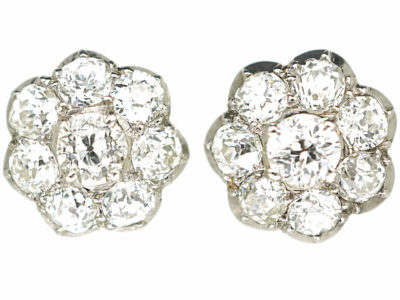 Art Deco 18ct White Gold Diamond Cluster Earrings
Art Deco 18ct White Gold Diamond Cluster Earrings



 Free Worldwide Delivery
Free Worldwide Delivery View All
View All
 Diamond
Diamond
 Sapphire
Sapphire
 Emerald
Emerald
 Ruby
Ruby










